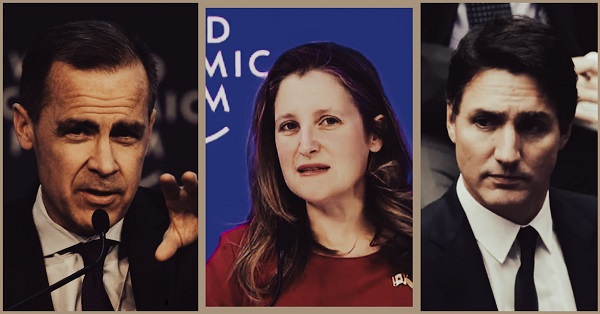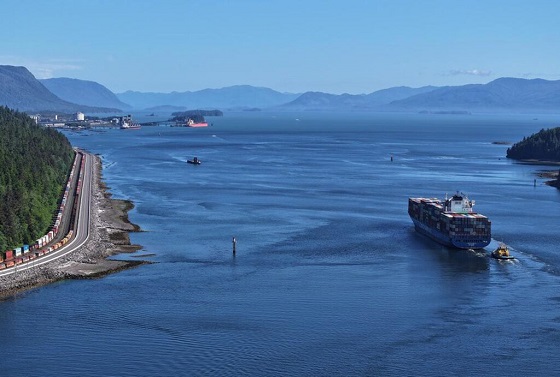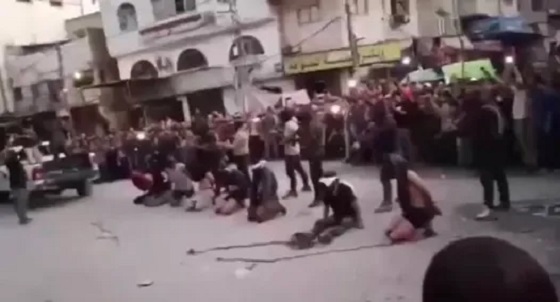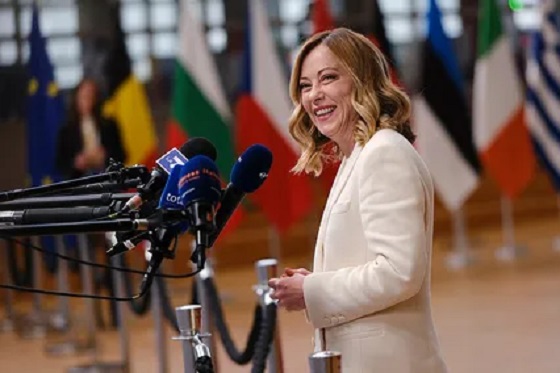National
Trudeau’s Last Stand, Resignation Rumors Swirl as Liberals Face Political Oblivion

With Polls in Free Fall and a Caucus Revolt Brewing, Analyst believe the Liberals will Bet on Identity Politics to Distract Canadians From Nine Years of Failure
If you haven’t already, crank up Whitesnake’s Here I Go Again, because the Liberal Party is hitting all the same notes in their spectacular fall from grace. Rumors are swirling that today Justin Trudeau, the king of platitudes and bad policies, might finally call it quits after nine long years of setting Canada on fire and calling it progress.
So, why is Trudeau on the verge of resignation? Because he’s facing a caucus revolt. Apparently, some of these MPs weren’t thrilled they didn’t get picked for the very last liberal cabinet shuffle, (or maybe it has to do with the latest Anguis Reid polls) which is funny considering they’ve had years to boot this guy. Instead, they’ve spent their time smiling for photo ops and pretending the country isn’t spiraling into chaos. Now, with the next election practically on the doorstep—2025, people—they’re panicking. And it’s glorious to watch.
Let’s set the stage: the latest Angus Reid poll is catastrophic for the Liberals. They’re sitting at 16%—that’s not just bad, that’s “we’re going to lose half our seats” bad. For context, the NDP is at 21%, which is embarrassing enough, but the Conservatives are at 45%. These are Harper-era numbers, folks. Pierre Poilievre isn’t just winning; he’s running victory laps before the race has even started.
So, what are the Liberals going to do? Well, they have three options. Spoiler alert: they’re all terrible.
Option 1: Prorogue Parliament and Hold a Leadership Race
So here’s the Liberals’ desperate move: prorogue Parliament, delay governing, and launch a leadership race to distract Canadians from their failures. It’s a political circus waiting to happen. Every ambitious Liberal—Freeland, Carney, Champagne—will throw their hat in the ring, and none of them are ready to clean up Trudeau’s mess.
But here’s the kicker: the clock is ticking. The fiscal year ends March 31, and without passing Interim Supply, the government literally shuts down. A leadership race takes months, leaving the party paralyzed while Pierre Poilievre dominates the narrative.
A new leader won’t fix anything; they’ll just inherit a sinking ship and take the blame for the inevitable electoral disaster. This isn’t a solution—it’s a slow, painful march toward oblivion while Canadians demand real leadership.
Option 2: Force a Leader Down Our Throats
Here’s where it gets spicy. The Liberals could skip the drama and appoint a new leader outright—someone like Chrystia Freeland. This would be their Kamala Harris moment. They’d toss Trudeau overboard, slap Freeland on the podium, and scream from the rooftops, “Canada’s First Female Prime Minister!” The media would eat it up. They’d call it historic, groundbreaking, revolutionary.
But here’s the first roadblock: Trudeau doesn’t have to go anywhere unless he decides to. That’s right, folks—there’s no magical “kick him out” button in the Liberal Party rulebook. Even if half his caucus is banging down his office door with pitchforks, Trudeau can just sit back, flash his trademark grin, and say, “I’m still your guy.” It’s less of a democratic process and more of a monarchy with better PR.
Now, let’s assume Trudeau does step down because, let’s face it, his ego might be the only thing keeping him there. Enter Chrystia Freeland. The Liberals would roll her out as the savior of their sinking ship.
But here’s the problem: Freeland’s record is awful. She’s been Trudeau’s loyal sidekick for years, backing every bad policy this government has pushed. From the $65 billion budget blowout to fraudulent COVID loans to the carbon tax disaster, Freeland has her fingerprints all over this mess. She’s not a fresh start; she’s Trudeau 2.0, but with less charisma.
And let’s be real, the Liberals wouldn’t run on their record because their record is a disaster. Instead, they’ll double down on identity politics. Freeland will be the face of the campaign, and the talking points will be predictable: “Conservatives hate women. Conservatives will ban abortion. Conservatives are scary.” It’s the same broken record we’ve heard a million times before. It didn’t work in the U.S., and it’s not going to work here. Canadians are smarter than that.
Option 3: Let Trudeau Go Down with the Ship
Now, this might actually be the smartest move. Trudeau built this disaster. He deserves to be the face of the loss. Let him captain the ship straight into the abyss, take the hit in the next election, and then rebuild from the ashes. It’s not pretty, but it’s probably the cleanest way to salvage the Liberal brand long-term.
But we all know the Liberals won’t do this. They’re too arrogant, too desperate, and too addicted to their own spin. Instead, they’ll probably shove Freeland into the spotlight either through a leadership race or just by bypassing the vote and just giving her the reigns and let her ride the Titanic into electoral oblivion, and then act surprised when it all goes horribly wrong.
Trudeau’s Titanic, Freeland’s Fantasy, and the Liberal Pipe Dream
So, here’s what I expect to happen, and honestly? Good riddance to Trudeau. Nine years of turning this country into a woke, bloated, over-taxed shell of what it used to be—his time is up. But let’s be real, the Liberals’ ship hit the iceberg years ago. Now they’re panicking because it’s finally sinking, and they’re trying to figure out who’s going to be the face of the wreckage. Spoiler alert: none of their options are good.
Here’s their play: they’re going to pull the Kamala Harris switcheroo. Replace Trudeau with Chrystia Freeland, slap a big, shiny label on her as Canada’s “First Female Prime Minister,” and hope nobody notices she was the co-pilot of this crash. Freeland has been positioning herself for this moment for years. She’s stood right next to Trudeau, smiling, nodding, and championing the very policies that have made Canadians poorer, angrier, and ready to vote Conservative in record numbers.
But here’s what they don’t want you to know—and here’s what they won’t campaign on: the Liberal record. Why? Because it’s abysmal. Corruption? Check. They handed out COVID loans like Halloween candy, with billions lost to fraud. Deficits? Oh, just a casual $65 billion for 2024. Inflation? A raging fire that’s destroying Canadians’ savings and quality of life. Authoritarian measures? Let’s not forget freezing bank accounts during the Freedom Convoy protests. Big government? That’s not just their record; it’s their entire identity.
And with Freeland at the helm, that’s not going to change. What’s the plan? Double down on identity politics, of course. “Chrystia Freeland: Canada’s First Female Prime Minister.” That’ll be the headline. That’ll be the news cycle. And anyone who questions her? Sexist. Misogynist. Anti-woman. Oh, and here’s the cherry on top: they’ll pivot straight to abortion rights. Why? Because they think it’s the one play that still works. Ignore the economy. Ignore the housing crisis. Ignore the fact that Canadians are literally rationing food. Just scream, “The Conservatives hate women!” and hope it sticks.
If I were a Liberal strategist—and thank God I’m not—I’d tell them to shove Freeland down our throats now. Why? Because the leader of the Titanic isn’t making it out alive. Whoever takes over the Liberal Party right now is going down with the ship, no question about it. Freeland appeals to the Liberal base: the blue-haired Twitter warriors, the downtown elites, the latte liberals. That’s her crowd. But here’s the problem: that’s it. She’s not reaching the working-class Canadians who are sick of paying for Liberal failures. Hillary Clinton has more likability than Freeland, and that’s saying something.
So, yes, they’ll run her on abortion rights, paint the Conservatives as the boogeyman, and pretend Canadians don’t notice they’ve been absolutely terrible for nine years. But let’s be honest—this is a political kamikaze mission for Freeland. The election results in 2025 are going to be catastrophic for the Liberals. And once the dust settles, Freeland is finished. She’ll be the face of the defeat, the one who led the party into the abyss.
And that’s why the real Liberal leadership race starts after the election. Mark Carney, the former Bank of Canada governor, is waiting in the wings. He’s smart enough to know the Liberals need to burn to the ground first before they can rebuild. He’s the only one who can go toe-to-toe with Pierre Poilievre on fiscal policy. If the Liberals want to have a shot at relevance in 10 years, Carney’s their guy. Pair him with someone like Christy Clark as deputy liberal opposition leader, and maybe—maybe—they can reforge the Liberal brand.
But Trudeau? He should go down with the ship. He built this disaster. He’s the reason the Liberals are at 16% in the polls while the Conservatives are at 45%. Let him take the fall. Let the party burn, and let the next generation of upstarts fight over the ashes. Freeland can have her moment, her delusion that she can fix this, but she’s only walking into political oblivion.
So here’s my advice to the Liberals: pour the champagne, play the violin, and let Justin Trudeau captain his sinking ship. And hey, as the ship goes down, maybe Trudeau can declare himself a transgender woman to grab the first spot on the lifeboat—because nothing says progressive hero like skipping the line while the rest of the crew drowns in his mess.
Subscribe to The Opposition with Dan Knight .
For the full experience, upgrade your subscription.
Energy
Prince Rupert as the Optimal Destination Port for an Alberta Crude Oil Pipeline –

From Energy Now
Assessing the Strategic, Economic, and Environmental Advantages on British Columbia’s Northern Coast
With ongoing discussions about diversifying Alberta’s crude oil export routes, selecting the right destination port on British Columbia’s northern coast is critical. This analysis examines Prince Rupert as a prime candidate, highlighting why it stands out as the best choice for a new Alberta crude oil pipeline.
Geographic and Logistical Advantages
Prince Rupert is Canada’s deepest natural harbour and is located approximately 1,500 kilometres closer to Asian markets than Vancouver. Its northern coastal position provides a shorter and more direct shipping route across the Pacific, reducing transit times and shipping costs. The port’s location also means ships can avoid the congested and environmentally sensitive waters of southern British Columbia, including the Salish Sea and Vancouver’s busy port.
Infrastructure and Expansion Capacity
Prince Rupert has a modern and rapidly expanding port infrastructure. The Port of Prince Rupert already handles bulk cargo, containers, and other exports, and it has significant capacity for further development. There is available land and established transportation corridors—including rail lines operated by CN Rail—that connect directly to Alberta, making it logistically feasible to construct a new pipeline and efficiently move crude oil to tidewater.
Economic Benefits
A pipeline terminating at Prince Rupert would open up Alberta’s crude oil to global markets, particularly in Asia, increasing market access and potentially securing better prices for Canadian oil producers. The economic spin-offs for both Alberta and northern British Columbia include job creation, increased tax revenue, and local business opportunities in construction, operations, and port services.
Environmental and Community Considerations
Shipping crude oil from Prince Rupert avoids some of the most ecologically sensitive regions along the southern coast. The port’s deep waters allow for safer navigation of large tankers, reducing the risk of groundings and spills. Additionally, the relatively low population density around Prince Rupert compared to southern ports minimizes the social impact and opposition that has historically challenged energy projects in more urbanized regions.
Strategic and Security Factors
The northern location of Prince Rupert is advantageous from a national security perspective. It is less vulnerable to geopolitical tensions and traffic bottlenecks that can affect southern ports. The port’s proximity to the open Pacific also reduces the time tankers spend in Canadian waters, limiting exposure to potential environmental incidents.
Prince Rupert’s strategic location, robust infrastructure, economic potential, and lower environmental and social risks make it the best choice for a new Alberta crude oil pipeline on British Columbia’s northern coast. Its selection would not only enhance Canada’s energy export capabilities but also support responsible economic development in Western Canada.
Business
Cutting Red Tape Could Help Solve Canada’s Doctor Crisis

From the Frontier Centre for Public Policy
By Ian Madsen
Doctors waste millions of hours on useless admin. It’s enough to end Canada’s doctor shortage. Ian Madsen says slashing red tape, not just recruiting, is the fastest fix for the clogged system.
Doctors spend more time on paperwork than on patients and that’s fueling Canada’s health care wait lists
Canada doesn’t just lack doctors—it squanders the ones it has. Mountains of paperwork and pointless admin chew up tens of millions of physician hours every year, time that could erase the so-called shortage and slash wait lists if freed for patient care.
Recruiting more doctors helps, but the fastest cure for our sick system is cutting the bureaucracy that strangles the ones already here.
The Canadian Medical Association found that unnecessary non-patient work consumes millions of hours annually. That’s the equivalent of 50.5 million patient visits, enough to give every Canadian at least one appointment and likely erase the physician shortage. Meanwhile, the Canadian Institute for Health Information estimates more than six million Canadians don’t even have a family doctor. That’s roughly one in six of us.
And it’s not just patients who feel the shortage—doctors themselves are paying the price. Endless forms don’t just waste time; they drive doctors out of the profession. Burned out and frustrated, many cut their hours or leave entirely. And the foreign doctors that health authorities are trying to recruit? They might think twice once they discover how much time Canadian physicians spend on paperwork that adds nothing to patient care.
But freeing doctors from forms isn’t as simple as shredding them. Someone has to build systems that reduce, rather than add to, the workload. And that’s where things get tricky. Trimming red tape usually means more Information Technology (IT), and big software projects have a well-earned reputation for spiralling in cost.
Bent Flyvbjerg, the global guru of project disasters, and his colleagues examined more than 5,000 IT projects in a 2022 study. They found outcomes didn’t follow a neat bell curve but a “power-law” distribution, meaning costs don’t just rise steadily, they explode in a fat tail of nasty surprises as variables multiply.
Oxford University and McKinsey offered equally bleak news. Their joint study concluded: “On average, large IT projects run 45 per cent over budget and seven per cent over time while delivering 56 per cent less value than predicted.” If that sounds familiar, it should. Canada’s Phoenix federal payroll fiasco—the payroll software introduced by Ottawa that left tens of thousands of federal workers underpaid or unpaid—is a cautionary tale etched into the national memory.
The lesson isn’t to avoid technology, but to get it right. Canada can’t sidestep the digital route. The question is whether we adapt what others have built or design our own. One option is borrowing from the U.S. or U.K., where electronic health record (EHR) systems (the digital patient files used by doctors and hospitals) are already in place. Both countries have had headaches with their systems, thanks to legal and regulatory differences. But there are signs of progress.
The U.K. is experimenting with artificial intelligence to lighten the administrative load, and a joint U.K.-U.S. study gives a glimpse of what’s possible:
“… AI technologies such as Robotic Process Automation (RPA), predictive analytics, and Natural Language Processing (NLP) are transforming health care administration. RPA and AI-driven software applications are revolutionizing health care administration by automating routine tasks such as appointment scheduling, billing, and documentation. By handling repetitive, rule-based tasks with speed and accuracy, these technologies minimize errors, reduce administrative burden, and enhance overall operational efficiency.”
For patients, that could mean fewer missed referrals, faster follow-up calls and less time waiting for paperwork to clear before treatment. Still, even the best tools come with limits. Systems differ, and customization will drive up costs. But medicine is medicine, and AI tools can bridge more gaps than you might think.
Run the math. If each “freed” patient visit is worth just $20—a conservative figure for the value of a basic appointment—the payoff could hit $1 billion in a single year.
Updating costs would continue, but that’s still cheap compared to the human and financial toll of endless wait lists. Cost-sharing between provinces, Ottawa, municipalities and even doctors themselves could spread the risk. Competitive bidding, with honest budgets and realistic timelines, is non-negotiable if we want to dodge another Phoenix-sized fiasco.
The alternative—clinging to our current dysfunctional patchwork of physician information systems—isn’t really an option. It means more frustrated doctors walking away, fewer new ones coming in, and Canadians left to languish on wait lists that grow ever longer.
And that’s not health care—it’s managed decline.
Ian Madsen is a senior policy analyst at the Frontier Centre for Public Policy.
-

 National2 days ago
National2 days agoDemocracy Watch Renews Push for Independent Prosecutor in SNC-Lavalin Case
-

 Alberta2 days ago
Alberta2 days agoClick here to help choose Alberta’s new licence plate design
-

 International1 day ago
International1 day agoHamas will disarm or die
-

 illegal immigration1 day ago
illegal immigration1 day agoLos Angeles declares a state of emergency over ICE deportations
-

 International1 day ago
International1 day agoUS Warns Hamas To Halt Executions
-

 International2 days ago
International2 days agoDaughter convinces healthy father to die in double assisted suicide with mother
-

 Business1 day ago
Business1 day ago‘Taxation Without Representation’: Trump Admin Battles UN Over Global Carbon Tax
-

 International1 day ago
International1 day agoItaly set to outlaw Islamic face coverings nationwide







